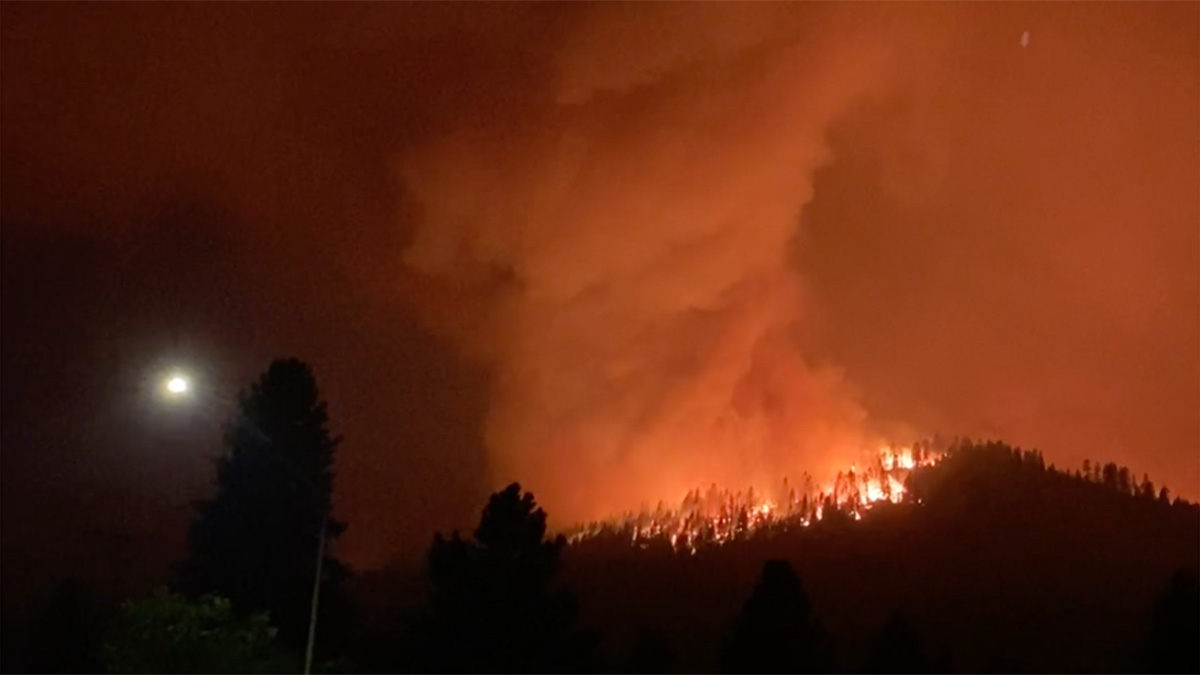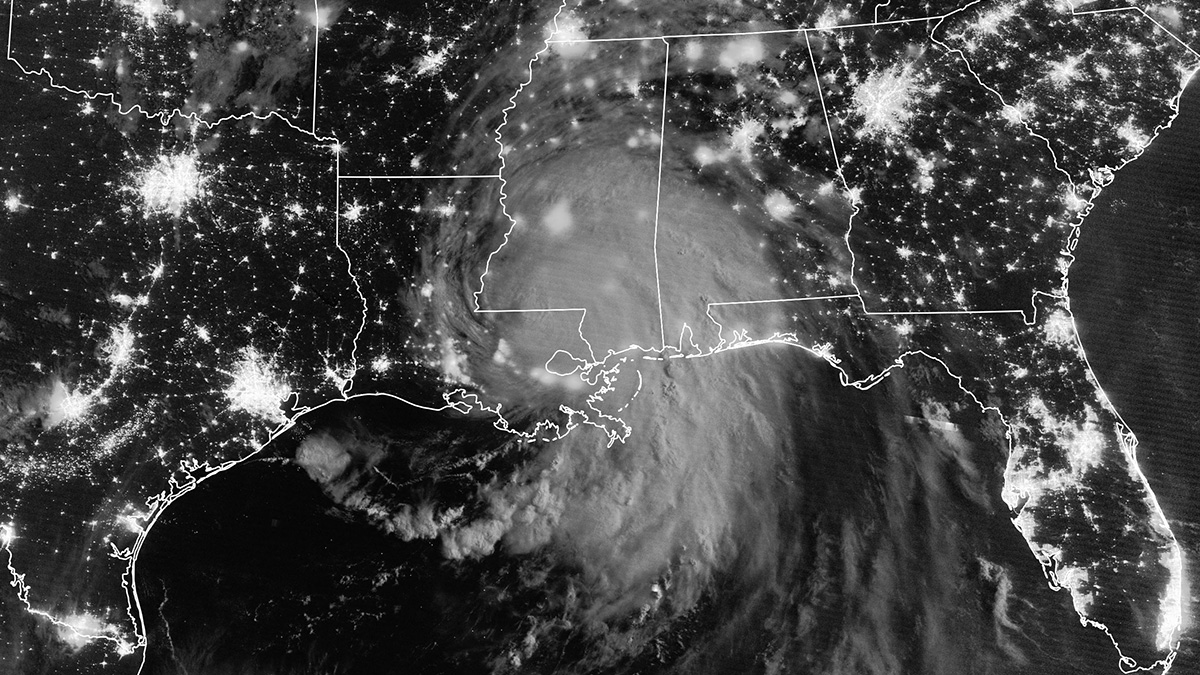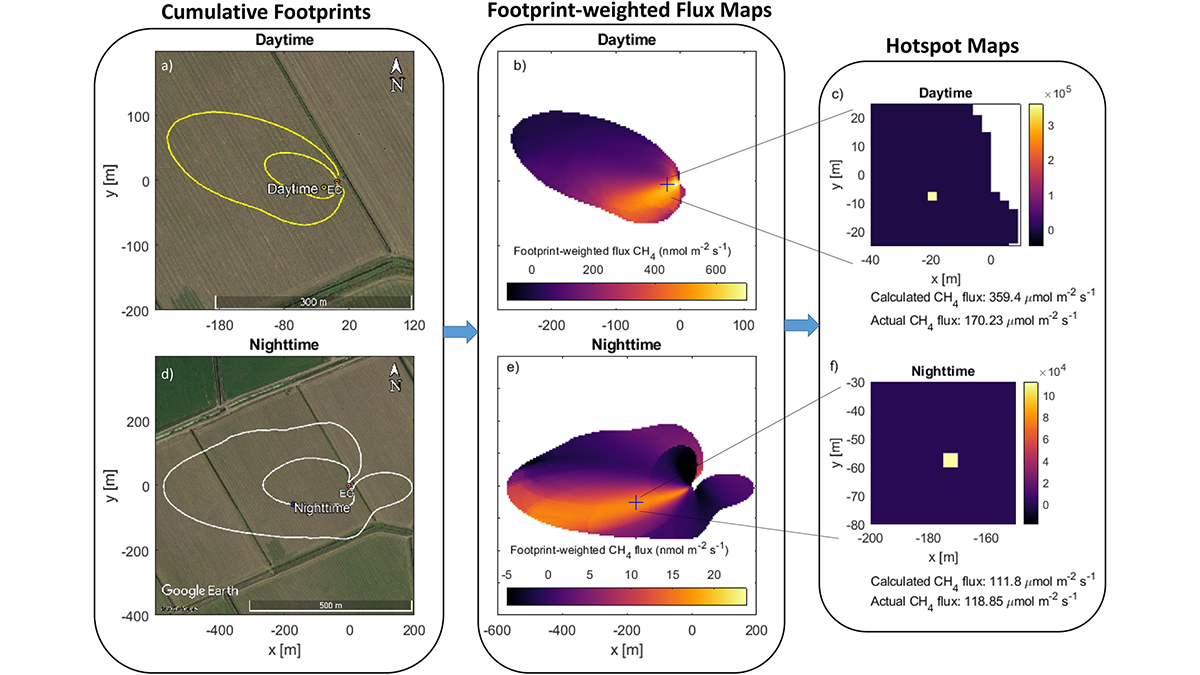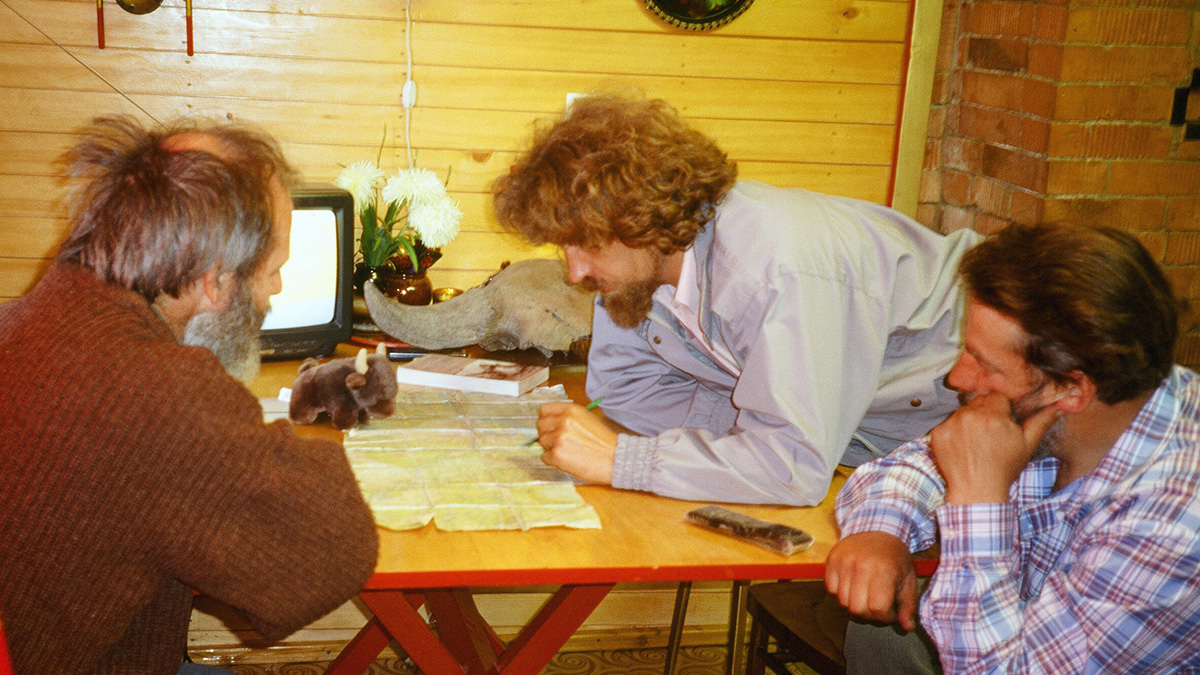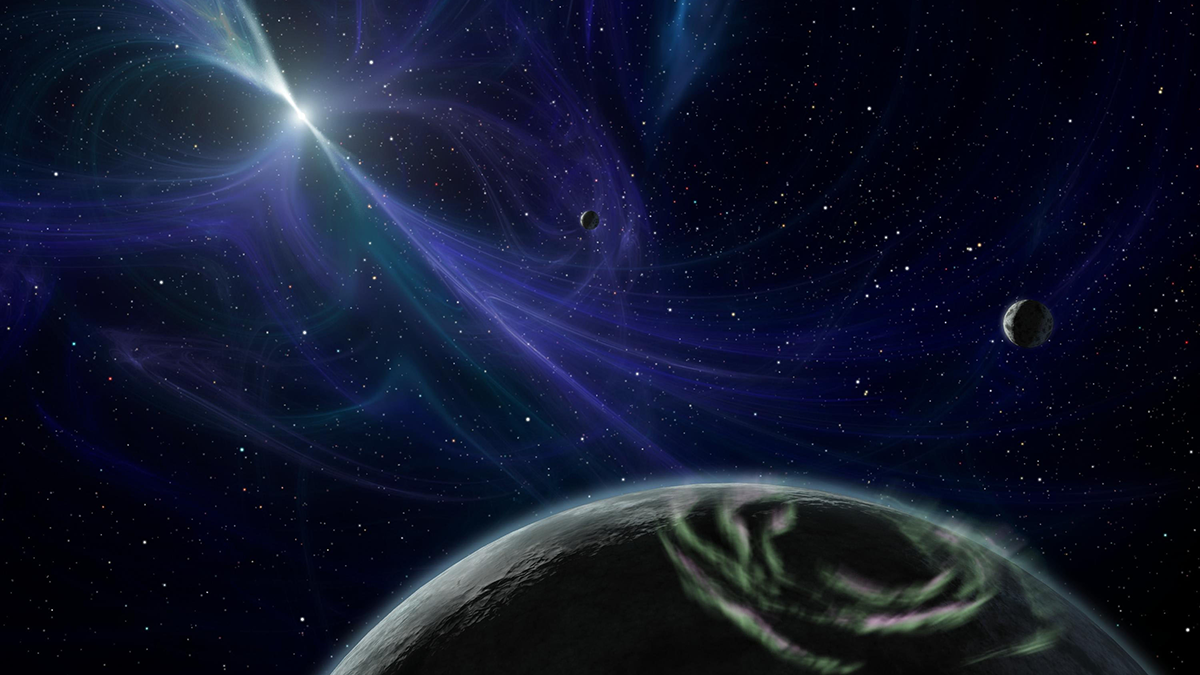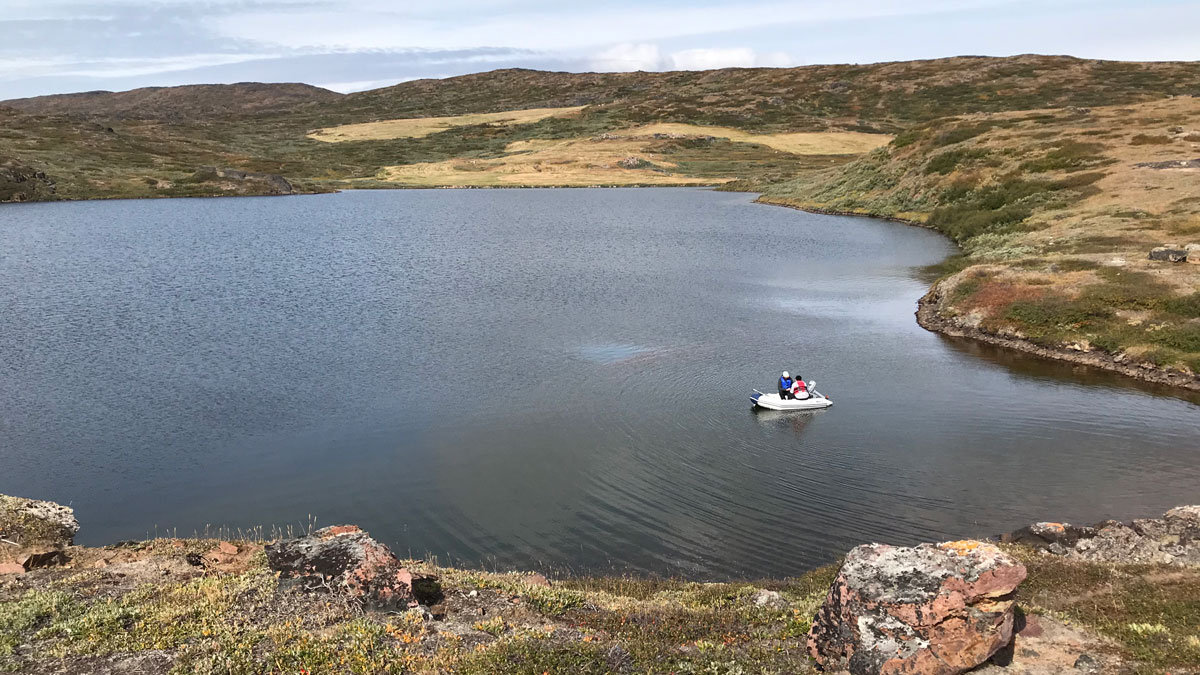Recent research suggests fire-generated vortices are always present during wildfires.
unsolved mysteries
A New Approach to an Unresolved Mystery in Climate Economics
Do shifts in temperature have enduring economic impacts? A “clever” trick identifying climate trends gets us one step closer to addressing this long-standing question in climate economics.
Sleuthing for Culprits of Greenhouse Gas Emissions
A new approach to detect hot spots of methane emissions with eddy covariance flux towers proves to be a worthy contender.
Swinging Strength of Earth’s Magnetic Field Could Signal Inner Core Formation
The magnetic record stored in rocks documents the liquid core’s behavior and possibly when the inner core formed. Whether it formed half a billion or more than a billion years ago, however, is up for debate.
How an Unlikely Friendship Upended Permafrost Myths
“Beautifully long arguments” between an American scientist and a Russian researcher helped clarify several fundamental assumptions about permafrost thaw.
Pulsar Planets Are Exceedingly Rare
A new survey of hundreds of pulsars could help solve the mystery of why planets exist around these dead stars.
Earth’s Lower Mantle Is Drier Than Previously Thought
Scientists have long known that the two layers of Earth’s mantle have different chemical compositions. Now, modeling shows that different water concentrations may keep them from mixing.
Evidence of Drought Provides Clues to a Viking Mystery
A persistent drying trend, not plunging temperatures, may have played a role in the unexplained disappearance of Norse settlers from Greenland, according to researchers.
Martian Glaciers May Have Carved Its Valleys
Networks of valleys provide puzzling hints of running water on the surface of the Red Planet. New research suggests that some tributaries could have formed from icy sheets thousands of meters thick.
A Unified Atmospheric Model for Uranus and Neptune
In a new model, three substantial atmospheric layers appear consistent between the ice giants.

